My personal End-of-Year tradition is to eat one last meal of weeds or other wild food that I can find on December 31. This year, I was at home in Oregon's Willamette Valley, in the Pacific Northwest of the US. Come see what's in my last wild meal of 2016.
Winter is here - we've had a giant ice storm and temperatures down to 18-19 degrees Fahrenheit (-8 C). But there are still plants worth foraging! I hope you have some of these weeds in your future in 2017!
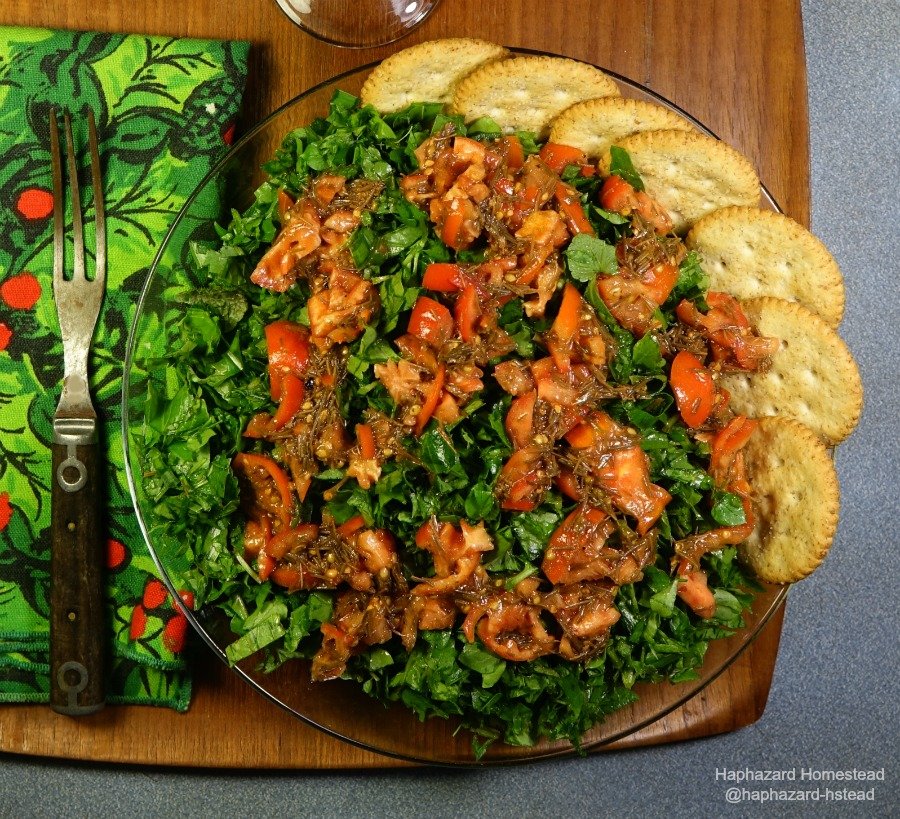
Step 1. Forage the greens
It may seem silly to try making a salad from winter weeds. But in my experience, there is a lot more greenery out there worth picking, especially if snow hasn't covered everything up for awhile. But it does help to know a few tips:
- Look in areas protected from the worst cold weather, like under trees or in tall grass.
- Learn to identify plants that can handle cold weather. Even though temperatures may drop, some plants perk up with even just a few warm days. Learn to identify those plants!
- Be picky! Don't just pick any greenery off a tasty plant. Look for the tender leaves. It's OK to pass by the leaves that are frost-damaged or tough.
- Pick clean. Who wants to be eating dead, dry chaff or plants that are not for eating!
- Pick organized. This makes it a lot easier in the kitchen to double-check that non-edible plants aren't in there.
My salad greens all came from my yard. I just took a walk. I took all the photos first, because that takes a lot longer than actually picking everything. These three photo collages show the plants that I foraged. The captions list their common names. But I include the scientific name in the plant list, because common names vary from place to place. Do you recognize any of them? Which ones do you have growing around you? Many of these plants are weeds and grow all over the world.
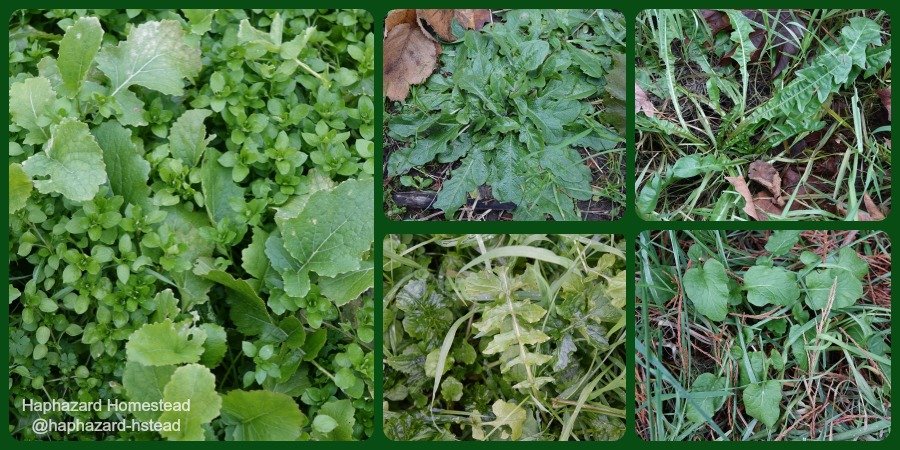
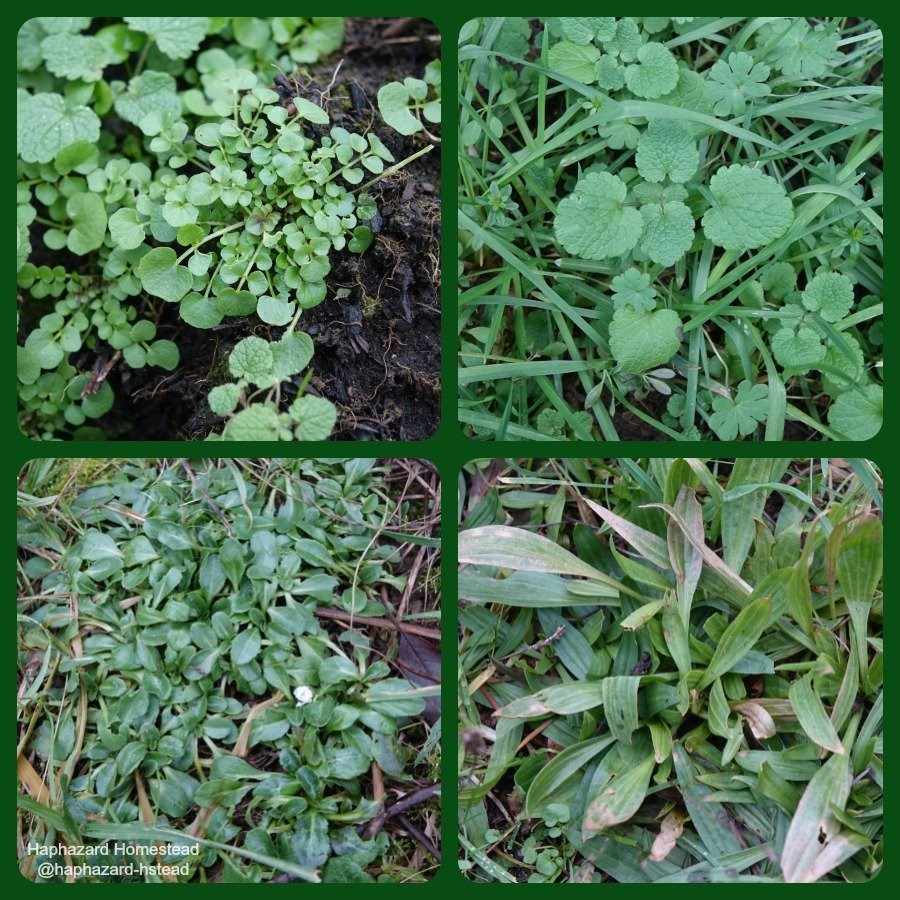
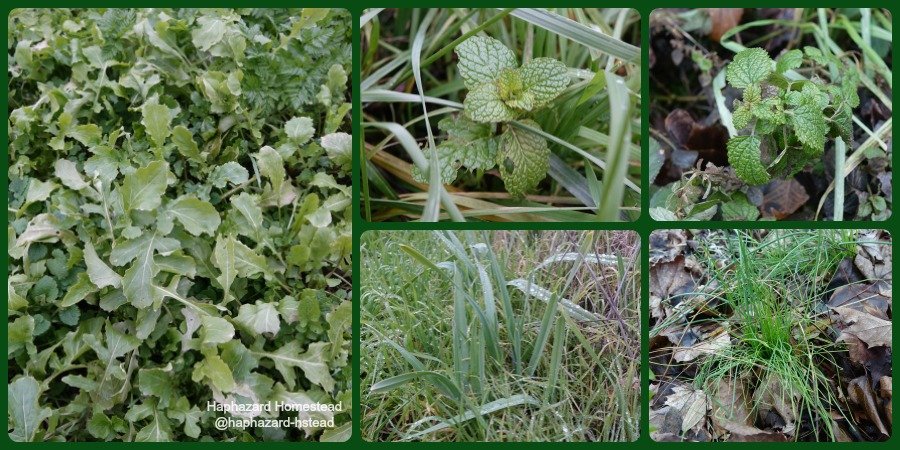
Step 2. Bring the harvest back to the kitchen
Back in the kitchen, I lay all my greens out to double-check that I don't have any non-edible plants. And I cull any poor quality plants. The numbers on each image correspond to the number in the plant identification list. Can you recognize any of them? Are any of your favorite wild greens here?
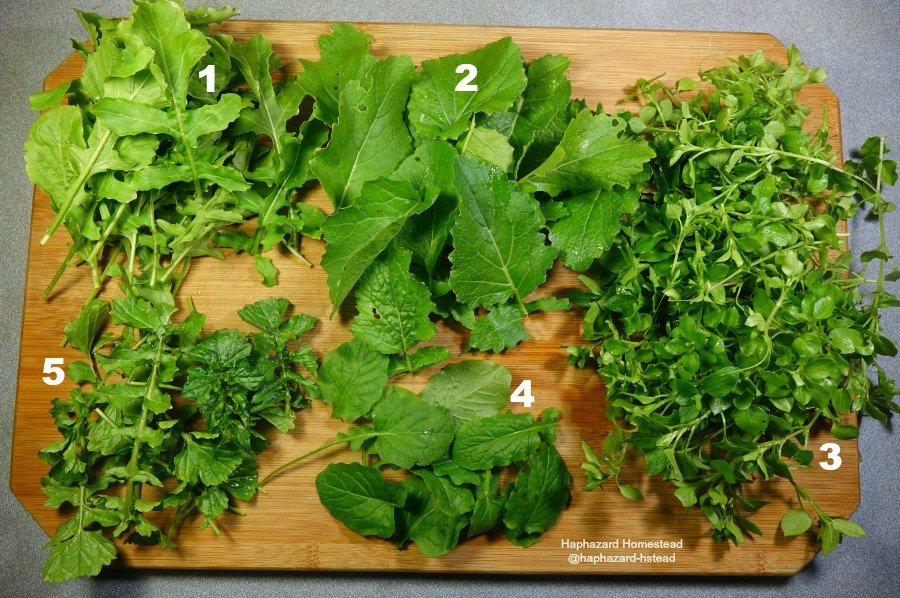
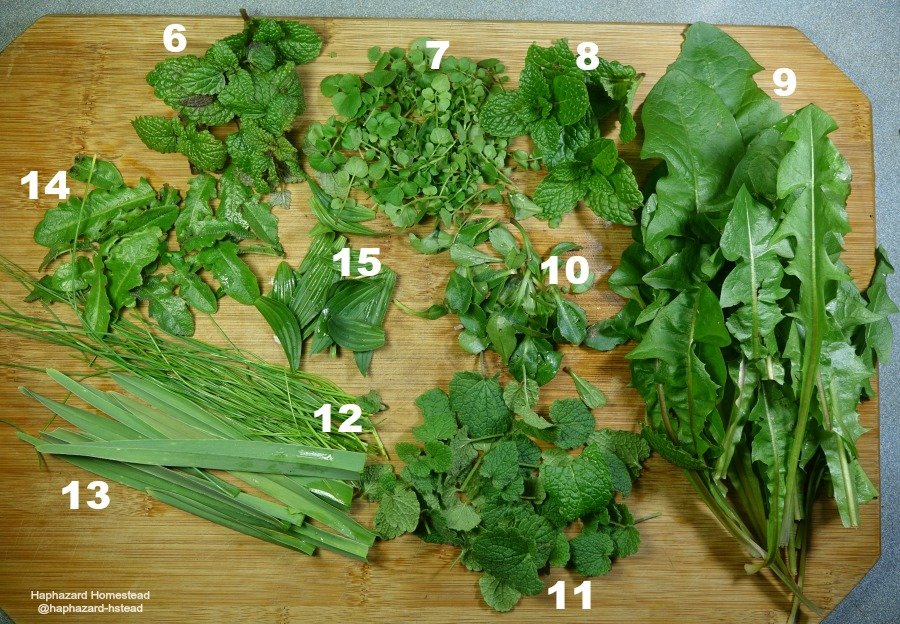
Step 3. Make the salad
Once I review all my plants, I put all the vegetation in a big pan to rinse them well. With all the winter weather, these plants can have mud and grit on them. And they can have slugs or snails on them, too. So it's important to rinse everything really well.
Then I drain the plants and chop them finely. I don't just chop them once, but a few times over. Chopping up all the greenery is not in fashion at fancy restaurants, but this is what makes a weed salad so tasty. By chopping them so finely, all the flavors mix together. You can see that my big pile of greens ends up a lot smaller in the final pile.

I put my chopped greens in a big salad bowl. I made a dressing out of olive oil, chopped homegrown tomatoes, diced Engelmann Spruce needles that I had used to make a great balsamic vinegar, and fresh-ground black pepper. I'll write a post about how I still have homegrown tomatoes ripening up from my last harvest in early October. I've mentioned my spruce tree balsamic vinegar in a previous post A Garden Harvest Repast, complete with a video showing how to make it.
It may not be the prettiest salad. But it's a great-tasting salad! And for the last day of the year, free from my yard? It's a priceless salad! It represents the abundance the world has given me in 2016. And I hope each and every one of you has abundance in your own life in 2017!
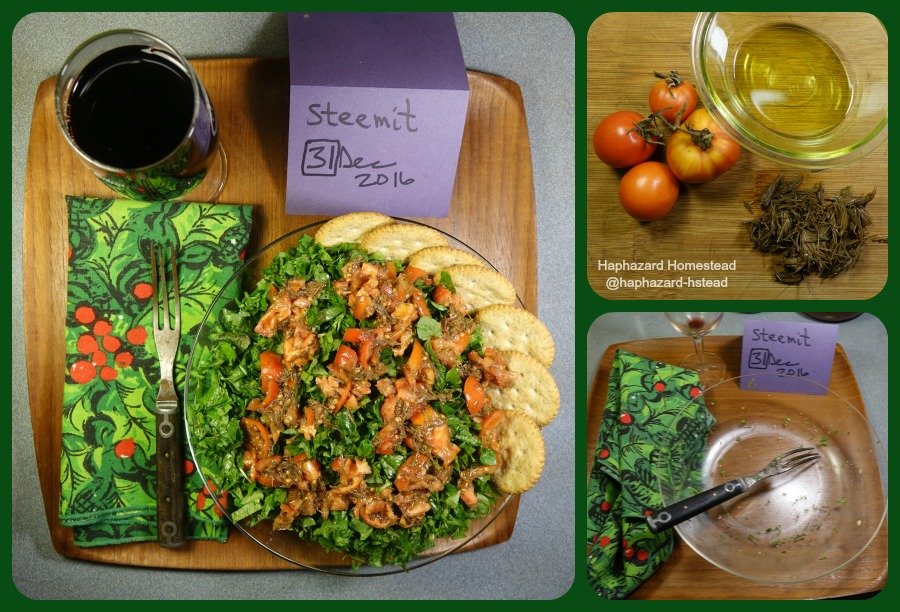
Plant List
- Wild arugula - Diplotaxis tenuifolia - leaves all year, except for deepest cold
- Field mustard greens – Brassica rapa – leaves from fall through early summer
- Chickweed - Stellaria media - from fall through spring
- Nipplewort - Lapsana communis - leaves fall through spring
- Hedge mustard – Sisymbrium officinale - leaves from fall through early summer
- Lemon balm – Melissa officinalis - leaves all year, if protected
- Bittercress - Cardamine hirsuta - leaves fall to early summer
- Spearmint - Mentha spicata - it lasts from spring until deep winter
- Dandelion greens – Taraxacum officinale – winter leaves are tender and mild
- English daisy – Bellis perennis – leaves from fall through early summer
- Purple deadnettle - Lamium purpureum - leaves fall through early spring
- Wild chives - Allium schoeneprasum - leaves from fall through spring
- Elephant garlic - Allium ampeloprasum - leaves from fall through spring
- Cats-ear - Hypochaeris radicata - winter leaves are tender and mild
- Narrowleaf plantain - Plantago lanceolata - leaves fall through early spring
- Engelmann spruce - Picea engelmannii - tender needles from new spring growth for the faux balsamic vinegar
What Do You Think?
Are there any wild plants to eat in your area in the winter? Do you enjoy any of these weeds in other times of the year? Did you enjoy any wild abundance in 2016? Are you interested in eating wild plants in 2017?
If there are any specific plants from this salad, or others that I've posted about, that you want to know more about, let me know. I'll put together a post about it.
Thoughts for 2017
Being able to eat wild plants, especially weeds, is the epitome of sustainability. The plants in this salad took absolutely zero effort from anyone, except for the picking and cooking. They take care of themselves. Many of them are invasive weeds, so we can pick all that we want. That's incredible and sustainable. I truly hope that every one of you can find wild plants around you, especially weeds, that are good to eat. This is real food for regular people. It's incredibly good food.
I write about foraging because I believe that we can all have lives that are richer, more secure, more grounded, and more interesting by getting to know the plants and the land around us – in our yards, our parks, and our wilderness.
I would like Steemit to be the premier site for Foraging on the Internet! If you have any thoughts about foraging, or experiences to share, write a post and be sure to use the Foraging tag. And check out the @foraging-trail to see curated quality posts about foraging. Happy Foraging!
** Haphazard Homestead **
*** foraging, gardening, nature, simple living close to the land ***
All content is 100% Haphazard Homestead - photos and all!
I participate in Operation Translation. All my posts are available for translation under the rules listed on the linked post from @papa-pepper. Logo provided by @oepc85. Post goes 100% to Steem Power! Logo provided by @merej99

*** foraging, gardening, nature, simple living close to the land ***

